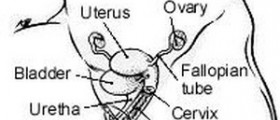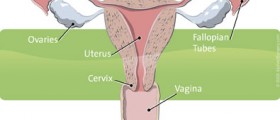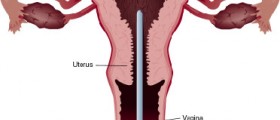
What Is Abdominal Hysterectomy?
Abdominal hysterectomy is a medical term used for a surgical intervention in which the uterus gets removed from a woman’s body through an incision in the lower abdomen. In some cases, the process of hysterectomy may also involve the removal of the fallopian tubes and one or both ovaries. Even though it sounds as something terrifying, hysterectomy is one of the most frequently performed surgical procedures among the female population. There are also different types of hysterectomy such as vaginal hysterectomy in which the uterus gets removed through an incision in the vagina. Laparoscopic hysterectomy is a surgical process which involves the use of laparoscopic instruments through small incisions in the abdomen. All women should be aware of an important fact that once the hysterectomy is performed, pregnancy is not possible anymore. Those who suffer from cancer can only be treated by hysterectomy, but other less severe medical conditions such as uterine prolapse, endometriosis and fibroids may be treated with other less invasive treatment options which are not irreversible. Most cases of hysterectomy are perfectly safe, but no surgical intervention is free from risks of various complications. The most common risks associated with hysterectomy include an early onset of menopause, damage to the rectum, damage to the bladder, damage to the urinary tract, damage to the pelvic structures, adverse reactions to anesthesia, excessive bleeding, various different types of infections, blood clots, and, in some rare cases, even death. Hysterectomy can only be performed in a hospital and the hospital stay depends on the type of surgical intervention and the recovery time. Most cases require the patient to stay in the hospital for a day or two.
When it is Needed?
There are quite a few medical conditions that call for a treatment which involves performing an abdominal hysterectomy. One of the most common ones is chronic pelvic pain. This pain is in most cases arising from the uterus and that is why it calls for hysterectomy. Not all cases of pelvic pain can be treated with an abdominal hysterectomy and if there is an unnecessary one performed, it may even lead to further medical complications and problems. One needs to be carefully evaluated before undertaking any surgical procedure. The tests which are usually performed before hysterectomy include pelvic ultrasound, endometrial biopsy and Pap test. Pelvic ultrasound is used to show the size of ovarian cysts, endometrial polyps or uterine fibroids, if there are any. Endometrial biopsy is used to take a sample of uterine lining to check for any abnormal or cancerous cells, while the Pap test is used for the detection of any abnormal cervical cells. Persistent vaginal bleeding is another medical condition which may call for hysterectomy. This usually involves cases of heavy, irregular or prolonged menstrual cycles. Uterine prolapse is a condition in which the uterus descends into the vagina due to the weakening of the supporting tissues and ligaments and it may often be associated with difficulty with bowel movements, pelvic pressure or urinary incontinence, so it may also call for a surgical intervention called abdominal hysterectomy. Endometriosis is a fairly common medical condition among women and it is characterized by the growth of tissues that lines the inside of the uterus outside the uterus and onto the fallopian tubes, ovaries or any other abdominal or pelvic organ. It may sometimes be relieved by conservative surgery or certain types of medications, but if these fail ,it can only be treated by hysterectomy accompanied by the removal of the fallopian tubes and the ovaries. Fibroids are a quite complicated medical condition. They are actually benign tumors of the uterus frequently associated with bladder pressure, pelvic pain, anemia and persistent bleeding. They can sometimes be treated by nonsurgical types of treatment methods, but some cases may only be relieved by abdominal hysterectomy. Gynecologic cancer is a term used for the cancer of cervix or the uterus and it is commonly treated by hysterectomy. Other nonsurgical treatment options for this type of medical condition include chemotherapy and radiation.
After the Surgery
Once the hysterectomy is performed, the patient needs to stay in the recovery room for a couple of hours. Pain medications are commonly used along with certain others so that infections can be prevented. One also needs to use sanitary pads for vaginal discharge and vaginal bleeding. Even though the incision on the abdomen heals gradually, it is impossible to avoid the remaining scars on the abdomen. The recovery period for women after abdominal hysterectomy usually lasts for up to eight weeks. During that period, one needs to follow the doctor’s recommendations very closely, avoid any sexual activity, avoid lifting heavy objects and get as much rest as possible. After a hysterectomy, a woman will not have menstrual periods anymore and will not able to get pregnant.

















Your thoughts on this
Loading...